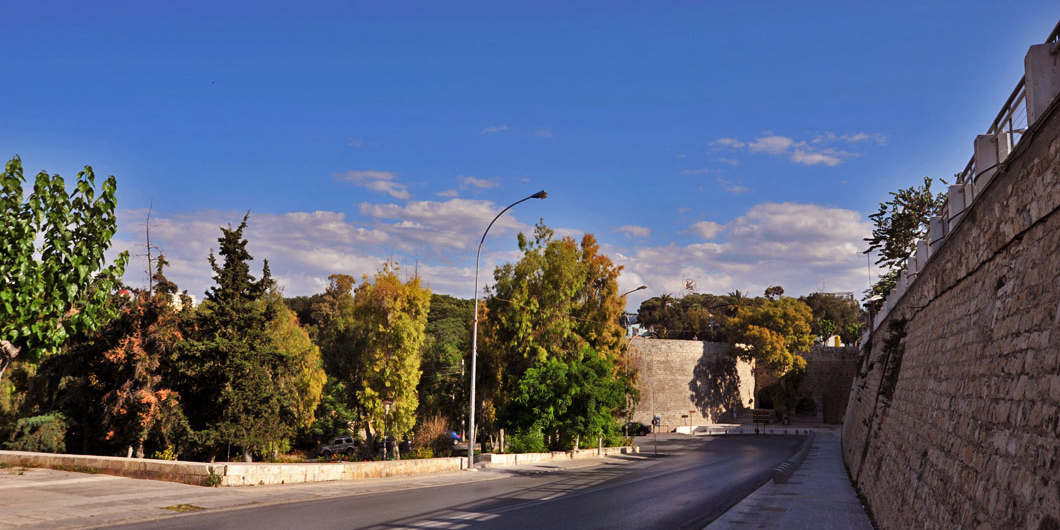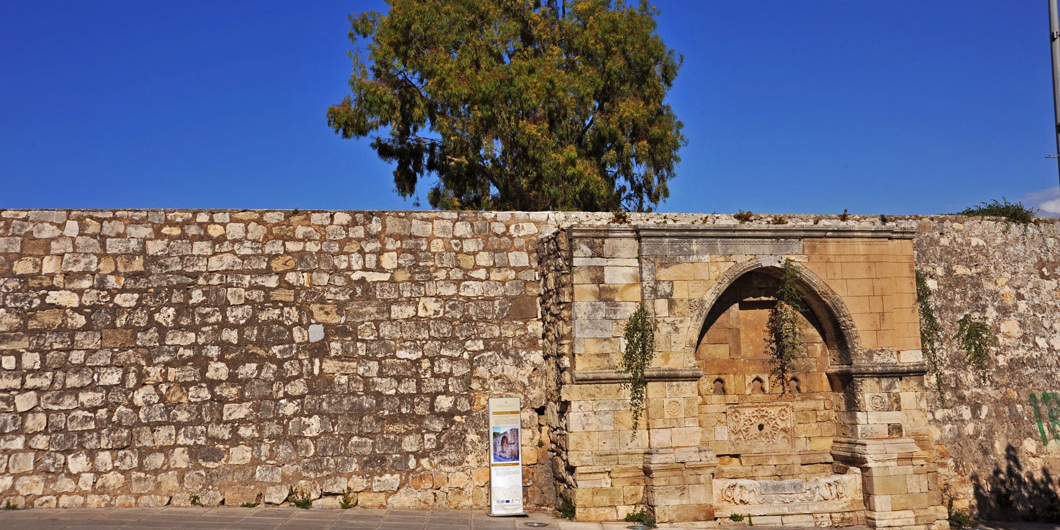Heraklion had been fortified already in the years of the First Byzantine period (330-840 AD). These fortifications were supplemented by the Arabs (840-961), the Byzantines (961-1204), and the Venetians, after 1211.
Indeed, the looming Turkish threat compelled the Venetians to reinforce the defence of the capital city of Regno di Candia(Kingdom of Crete), using the latest technologies of the time. The fortifications that can be seen today were based on the designs made by the Venetian architect Michele Sanmicheli, and they were built somewhere between 1462 and 1560.

The main wall was three kilometres long, and had four gates and seven bastions. It was surrounded by a large moat which had additional bastions on the outside that do not survive today.
The fortification works of Heraklion are rightfully counted among the most important in the Eastern Mediterranean, regarding their size, aesthetics and their functional superiority.
Fortification Gates of Herakion
The Venetian city walls had four main gates, located at the four compass points.
The Harbour Gate (Pili tou Molou) stood to the north, at the far end of 25 August Street, and led to the harbour of the port. The Pantocrator Gate is situated to the west, next to where the impressive Chania Gate (Chanioporta), was built in later years. The Saint George Gate (Pili Agiou Georgiou) can be seen to the east, by the central square of Heraklion (Eleftherias square). The Jesus Gate (Pili tou Iisou), also known as the New Gate (Kainourgia Porta), is to be found to the south.

In addition to these four main entrance points, another three gates were built, to felicitate the movement of people and goods between the city and the port.
One of them was the Saint Andrew Gate (Pili Agiou Andrea), to the west, which was named after a bastion with the same name that proved to be the weakest point in the walls; it was through this point that the Turks invaded the city in 1669.
The second gate to be found eastwards was named Sand Gate (Pili tis Ammoudias), also known as Sabbionara, because it led to the beach east of the city. The third one, to the north, is the Dermatas Gate (Pili tou Dermata), located west of the Historical Museum.











